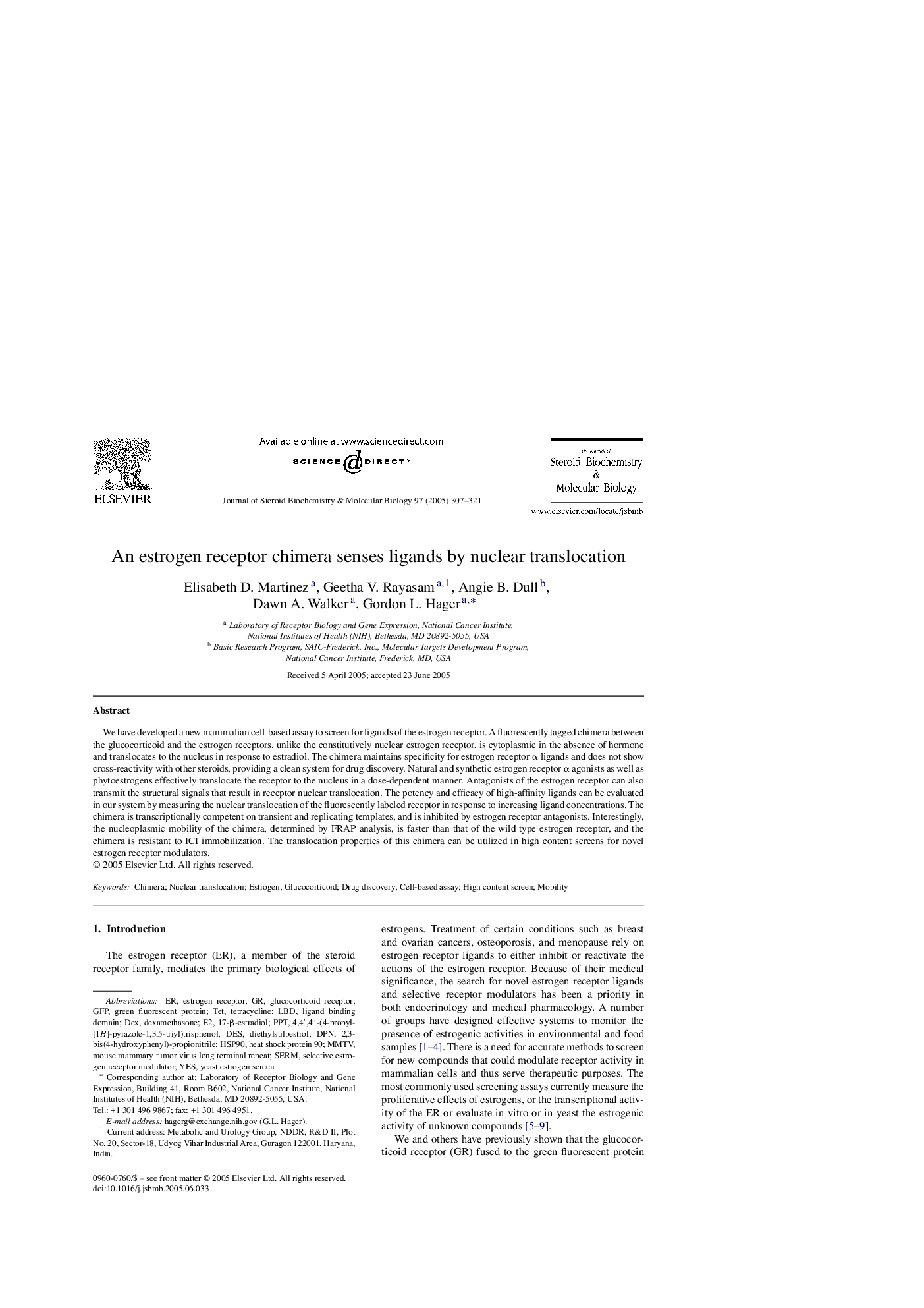| Article ID | Journal | Published Year | Pages | File Type |
|---|---|---|---|---|
| 9892020 | The Journal of Steroid Biochemistry and Molecular Biology | 2005 | 15 Pages |
Abstract
We have developed a new mammalian cell-based assay to screen for ligands of the estrogen receptor. A fluorescently tagged chimera between the glucocorticoid and the estrogen receptors, unlike the constitutively nuclear estrogen receptor, is cytoplasmic in the absence of hormone and translocates to the nucleus in response to estradiol. The chimera maintains specificity for estrogen receptor α ligands and does not show cross-reactivity with other steroids, providing a clean system for drug discovery. Natural and synthetic estrogen receptor α agonists as well as phytoestrogens effectively translocate the receptor to the nucleus in a dose-dependent manner. Antagonists of the estrogen receptor can also transmit the structural signals that result in receptor nuclear translocation. The potency and efficacy of high-affinity ligands can be evaluated in our system by measuring the nuclear translocation of the fluorescently labeled receptor in response to increasing ligand concentrations. The chimera is transcriptionally competent on transient and replicating templates, and is inhibited by estrogen receptor antagonists. Interestingly, the nucleoplasmic mobility of the chimera, determined by FRAP analysis, is faster than that of the wild type estrogen receptor, and the chimera is resistant to ICI immobilization. The translocation properties of this chimera can be utilized in high content screens for novel estrogen receptor modulators.
Keywords
mouse mammary tumor virus long terminal repeatHigh content screenDEXSERMMMTVLBDPPTGFP2,3-bis(4-hydroxyphenyl)-propionitrileHSP90TETDPN17-β-estradiolCell-based assayDESEstrogenNuclear translocationYESTetracyclineMobilityligand binding domainDexamethasoneDiethylstilbestrolYeast Estrogen ScreenSelective estrogen receptor modulatorHeat shock protein 90green fluorescent proteinDrug discoveryChimeraGlucocorticoidEstrogen receptorglucocorticoid receptor
Related Topics
Life Sciences
Biochemistry, Genetics and Molecular Biology
Biochemistry
Authors
Elisabeth D. Martinez, Geetha V. Rayasam, Angie B. Dull, Dawn A. Walker, Gordon L. Hager,
